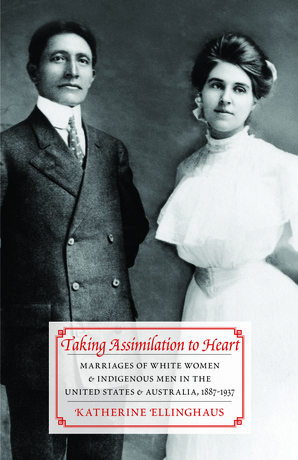Melville J. Herskovits and the Racial Politics of Knowledge
University of Nebraska Press
2004
357 pages
ISBN: 978-0-8032-2187-1
Jerry Gershenhorn, Professor of History
North Carolina Central University

Melville J. Herskovits and the Racial Politics of Knowledge is the first full-scale biography of the trailblazing anthropologist of African and African American cultures. Born into a world of racial hierarchy, Melville J. Herskovits (1895–1963) employed physical anthropology and ethnography to undermine racist and hierarchical ways of thinking about humanity and to underscore the value of cultural diversity. His research in West Africa, the West Indies, and South America documented the far-reaching influence of African cultures in the Americas. He founded the first major interdisciplinary American program in African studies in 1948 at Northwestern University, and his controversial classic The Myth of the Negro Past delineated African cultural influences on American blacks and showcased the vibrancy of African American culture. He also helped forge the concept of cultural relativism, particularly in his book Man and His Works. While Herskovits promoted African and African American studies, he criticized some activist black scholars, most notably Carter G. Woodson and W. E. B. Du Bois, whom he considered propagandists because of their social reform orientation.
After World War II, Herskovits became an outspoken public figure, advocating African independence and attacking American policymakers who treated Africa as an object of Cold War strategy. Drawing extensively on Herskovits’s private papers and published works, Jerry Gershenhorn’s biography recognizes Herskovits’s many contributions and discusses the complex consequences of his conclusions, methodologies, and relations with African American scholars.
Contents
- List of Illustrations
- Series Editors’ Introduction
- Acknowledgments
- Introduction
- 1. The Making of an Anthropologist
- 2. The Attack on Pseudoscientific Racism
- 3. Transforming the Debate on Black Culture
- 4. Subverting the Myth of the Negro Past
- 5. Objectivity and the Development of Negro Studies
- 6. The Postwar Expansion of African Studies
- 7. Foreign Policy Critic
- Epilogue
- Notes
- Bibliography
- Index
Introduction
We begin the new century like we began the last, debating the proper approach toward social and political concerns relating to race and culture. Yet the terms and the nature of the debate have changed. At the beginning of the twentieth century, race and culture were generally framed in hierarchical terms, with white Anglo-Saxon Protestants at the top of the developmental scale. In the United States, as in much of the rest of the world, white men held powerful political and social sway; African Americans, in particular, were subjugated politically, economically, and socially. Abroad, Africans and Asians su√ered similarly under Western imperialism. Those who were nonwhite, non-Western, or female had little voice in global politics or in the academy. According to mainstream scholars, African culture was nonexistent, and black American culture was merely a distorted version of Anglo-American culture….
…Herskovits sought to undermine racial and cultural hierarchy throughout his career. In his earliest work on the physical anthropology of American blacks—in the midst of 1920s modernist attacks on Victorian thought—he challenged the Victorians’ understanding of race as a biological concept. Using anthropometry, the tool that racist scholars had used to support the notion of a racial hierarchy, Herskovits refuted the dogma of race as an unchanging category, fixed in nature. In The American Negro (1928), Herskovits demonstrated that most American blacks had both African and European ancestry, but contrary to expectations, they exhibited very similar physical characteristics. This finding disproved the interpretation of traditional racial theorists, who assumed that the physical traits of individuals in mixed racial groups would be marked by great differences based on the definition of a race as a people with similar physical characteristics and a common racial ancestry. Herskovits’s finding that a mixed-race group was physically homogeneous rendered the biological definition of race untenable. Indeed, Herskovits maintained that American blacks, by virtue of their mixed heritage, were not really a race at all but a mixed population group. Further, he demonstrated the fallacy of the racist view that mulattoes could not reproduce. Consequently, Herskovits challenged the biological definition of race and helped steer scholars toward a more modern conception of race as a sociological category. By doing so, he undercut the notion that race determined behavior. Instead, he substituted environment and culture for race as the explanation for behavioral and intellectual differences between individuals. In this way he attacked racial hierarchy and demonstrated the falsity of intellectual rankings based on race…
Read the entire Introduction here.






